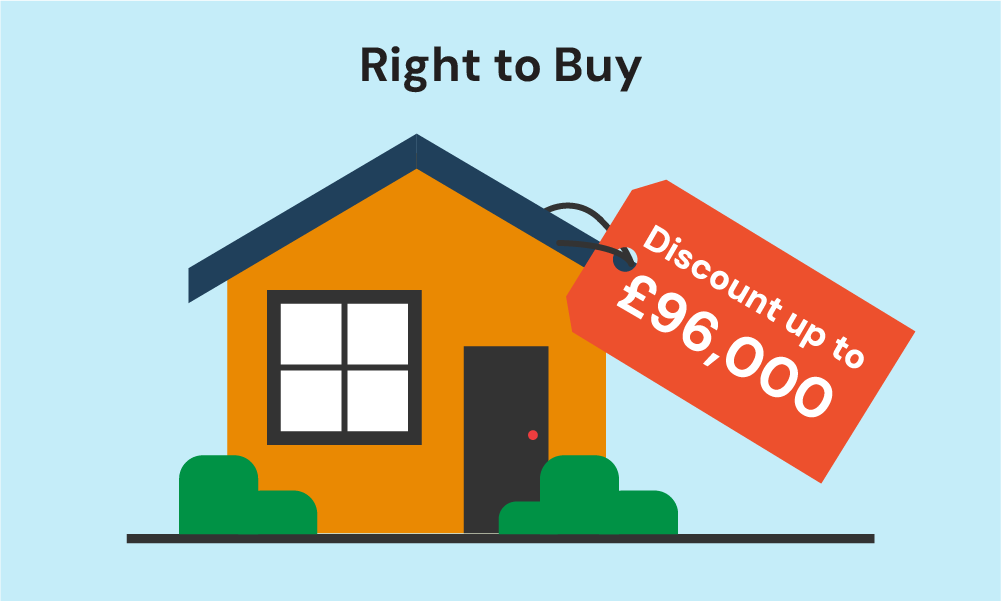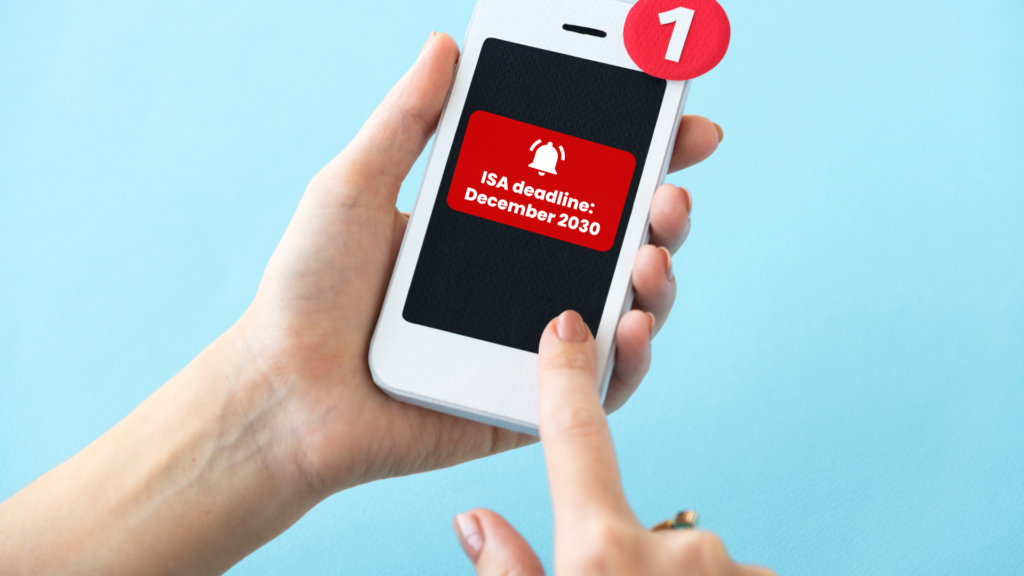- What is the Right to Buy Scheme?
- Am I Eligible for the Right to Buy Scheme?
- How Much Discount Can I Get?
- Can I Apply with Someone Else?
- What is the Process for Buying My Council Home?
- What If My Landlord Delays the Process?
- What Happens If I Want to Sell?
- Is the Right to Buy Scheme Right for You?
- Key Takeaways
- The Bottom Line
Right to Buy Scheme: A Guide for Tenants in the UK
The Right to Buy scheme is a well-known UK government initiative that helps council and housing association tenants buy their home at a big discount.
It has helped thousands of people become homeowners, often without needing a large deposit.
This guide will explain everything you need to know about the Right to Buy scheme, including who can apply, how the process works, and what to think about before deciding to buy.
What is the Right to Buy Scheme?
The Right to Buy scheme offers council tenants in England the chance to purchase their homes at a discounted rate.
Introduced in 1980 by Margaret Thatcher, it was a major policy shift aimed at giving tenants more control over their housing and the opportunity to own their homes.
The scheme has been beneficial for many tenants, helping them secure a home they already live in and potentially boosting their financial future through property ownership.

Am I Eligible for the Right to Buy Scheme?
To qualify, you must:
- Have a secure tenancy agreement with a public sector landlord, such as a council or housing association.
- Use the home as your only or main residence.
- Live in a self-contained property (not shared with other households).
- Have rented from a public sector landlord for at least three years (not necessarily consecutive).
- Not have severe debt issues (e.g., county court judgments or bankruptcy).
You may also be eligible under the Preserved Right to Buy scheme if your home was once a council property but was transferred to another public sector landlord while you were living there. Check with your landlord to see if this applies to you.
Right to Buy has been abolished in Scotland (2016), Wales (2019), and Northern Ireland (2022).
Some homes, like those built for elderly or disabled tenants or those owned by the armed forces, are exempt.
Check the Gov.uk website for more details on exempt properties.
How Much Discount Can I Get?
As of November 2024, the maximum discount has been reduced to:
Houses
If you’ve been a tenant for 3 to 5 years, you get a 35% discount off the market value.
After 5 years, the discount increases by 1% per additional year, up to a maximum of 70% or the regional discount cap (£38,000 or £16,000), whichever is lower.
For example, if a house is worth £250,000, the discount is capped at £38,000, so you’d pay £212,000.
Flats
For flats, you get a 50% discount if you’ve been a tenant for 3 to 5 years.
After 5 years, the discount increases by 2% per additional year, up to 70% or the regional discount cap (£38,000 or £16,000), whichever is lower.
For instance, if a flat is worth £200,000, even if a 50% discount applies, you will only receive the maximum allowed discount.
These discounts can cut down the price of your home, and in some cases, you may not need a deposit if the discount covers what mortgage lenders require.
If your landlord has spent money on building or maintaining the property, your discount could be reduced.
You can check your discount using the Right to Buy calculator on the Gov.uk website.
Image
Can I Apply with Someone Else?
Yes, joint applications are allowed under the Right to Buy scheme. You can apply with:
- Someone who shares your tenancy.
- Up to three family members who have lived with you for the past 12 months, even if they aren’t officially part of the tenancy agreement.
This can help you meet the affordability criteria for a mortgage, as the lender will look at all applicants’ incomes.
But, the property must be in the name of those listed on the Right to Buy application, even if someone else helps with the finances.
What is the Process for Buying My Council Home?
The process for buying your home under the Right to Buy scheme is relatively straightforward.
Here’s a step-by-step breakdown:
1. Complete the RTB1 form. This is the application form for the Right to Buy scheme. You’ll need to fill it out with details about your tenancy and the property.
2. Submit your application. Send the completed form to your landlord, ideally through recorded delivery so you can track when it arrives.
3. Landlord’s response
Your landlord has 4 weeks to respond to your application (or 8 weeks if they’ve been your landlord for less than 3 years). If they decline, they must explain why.
You can appeal the decision if the reason for denial is that the property is suitable for elderly people.
In this case, you would need to appeal to a tribunal.
4. Receive your offer
If approved, your landlord will send you an offer within 8 weeks for freehold properties or 12 weeks for leasehold. This offer includes:
- The price you should pay and how it was calculated.
- Your discount and how it was worked out.
- A description of the property and any land included in the sale.
- Estimates of service charges (for flats or maisonettes) for the first 5 years.
- Any known structural problems with the property, such as subsidence.
If you disagree with the valuation, you can request an independent valuation from a district valuer through HMRC.
You’ll have 3 months to request this after receiving the offer.
Once the valuation is complete, you’ll have 12 weeks to accept the revised price or decide not to proceed.
5. Decision time
You have 12 weeks to decide whether you want to proceed with the purchase.
If you don’t reply within that period, your landlord will send a reminder, giving you an extra 28 days to respond.
If you still don’t reply, your application could be dropped. You can pull out of the sale at any time and continue to rent.
6. Arrange a mortgage
If you need to borrow money, now is the time to apply for a mortgage.
Many lenders are familiar with Right to Buy purchases, and the discount you receive can often be used as the deposit.
You’ll go through the same affordability checks as any other mortgage applicant.
7. Complete the purchase. Once you accept the offer, legal processes will begin, including contracts and property surveys.
Once complete, you’ll own your home.
What If My Landlord Delays the Process?
Landlords must follow strict timelines for the Right to Buy process. If they delay, you could get a reduction in the sale price.
If your landlord is taking too long, you can send an “Initial Notice of Delay” form.
If they still don’t act, you can send an “Operative Notice of Delay.” This means any rent you pay during the delay may be taken off the sale price.
What Happens If I Want to Sell?
If you sell your home within 10 years of purchasing it through the Right to Buy scheme, you must first offer it to your old landlord or another social landlord in the area.
The sale price should reflect the current market value, and if you can’t agree on the price, an independent valuation will determine it.
If you sell your home within 5 years, you’ll have to repay some or all of the discount:
- 100% of the discount in the first year.
- 80% in the second year.
- 60% in the third year.
- 40% in the fourth year.
- 20% in the fifth year.
To make things clear, let’s say you bought your home for £150,000 with a 40% discount (£60,000), so you paid £90,000.
If you sell it after 18 months for £200,000, the discount repayment is based on the new value.
The 40% discount on £200,000 is £80,000. Since you’re selling in the second year, you’ll need to repay 80% of that, which is £64,000.
Is the Right to Buy Scheme Right for You?
The Right to Buy scheme gives you the chance to buy your home at a discount, but there are extra costs to think about, such as:
- Paying for maintenance and repairs, which your landlord used to handle.
- Mortgage payments and interest.
- Service charges for flats, which cover things like building upkeep and communal areas.
Before deciding, it’s worth considering both the benefits and drawbacks of the scheme to see if it’s the right choice for you.
Pros:
- Buy your home at a discount.
- Helps long-term tenants become homeowners.
- You can sell the property later for a profit.
- You don’t have to move when buying your home.
- It can give your family more housing stability.
Cons:
- Fewer social housing options for future tenants.
- You are responsible for maintenance and repairs.
- The discount may lead to an overvaluation.
- Some lenders may be cautious with Right to Buy mortgages.
- Financial strain if the property value drops after you buy it.
It’s a good idea to get independent financial and legal advice to make sure you understand the long-term responsibilities of owning a home.
Key Takeaways
- The Right to Buy scheme helps council tenants buy their homes at a discount.
- You must be a secure tenant living in a self-contained property for at least 3 years to qualify.
- Discounts can go up to £38,000 in England and £16,000 in London, depending on tenancy length and property type.
- You can apply with co-tenants or family members to meet mortgage affordability criteria.
- The process involves filling out an RTB1 form, receiving an offer, and arranging a mortgage if needed.
- You can appeal the valuation through an independent assessment if you disagree with the offer price.
- If selling within 10 years, you must offer the home to your landlord first; selling within 5 years means repaying some of the discount.
The Bottom Line
Buying your council home is a big deal. You’ll have new responsibilities and financial commitments.
It can be hard to know what to do, from checking if you’re eligible and working out your discount to managing repairs and getting a mortgage.
A good mortgage broker can help you understand it all.
Here’s what a mortgage broker can do:
- Find the best deals for you.
- Make the paperwork easier.
- Give you advice on money and planning.
- Help you avoid problems and delays.
- Tell you about the best ways to get a loan with someone else or use a discount.
If you want to save time and avoid stress, contact us. We’ll connect you with a reliable broker who can help with your mortgage needs.
Get Matched With Your Dream Mortgage Advisor...

Frequently asked questions
What is Right to Acquire?
Right to Acquire is a government scheme that lets housing association tenants buy their home at a discount. The discount is smaller than Right to Buy, usually up to £16,000, depending on where you live.
You can apply if you’ve been a public sector tenant for at least 3 years, and your home was either built or bought by a housing association after 31 March 1997, or transferred from a council to a housing association after that date.
Your home must also be self-contained and your main or only residence.
If you don’t qualify for Right to Buy, Right to Acquire could still help you become a homeowner.
Speak to your landlord to check if you’re eligible, and visit the Gov.uk website for more details on how to apply.
Can I use the Right to Buy scheme if I live in a housing association property?
You may be eligible under the Preserved Right to Buy scheme if your property was transferred from a council to a housing association. Alternatively, the Right to Acquire scheme may apply, offering a smaller discount.
Will I need to pay a deposit?
In many cases, you won’t need a deposit, as the Right to Buy discount can serve as the deposit when applying for a mortgage.
What if I can’t afford the mortgage?
It’s important to speak with a mortgage advisor or broker who specialises in Right to Buy. They can help you find suitable lenders and guide you through the affordability checks.
Are there any restrictions on selling the property?
Yes. If you sell within the first 10 years, you must offer it to your previous landlord first. If you sell within 5 years, you’ll need to repay a portion of the discount.




